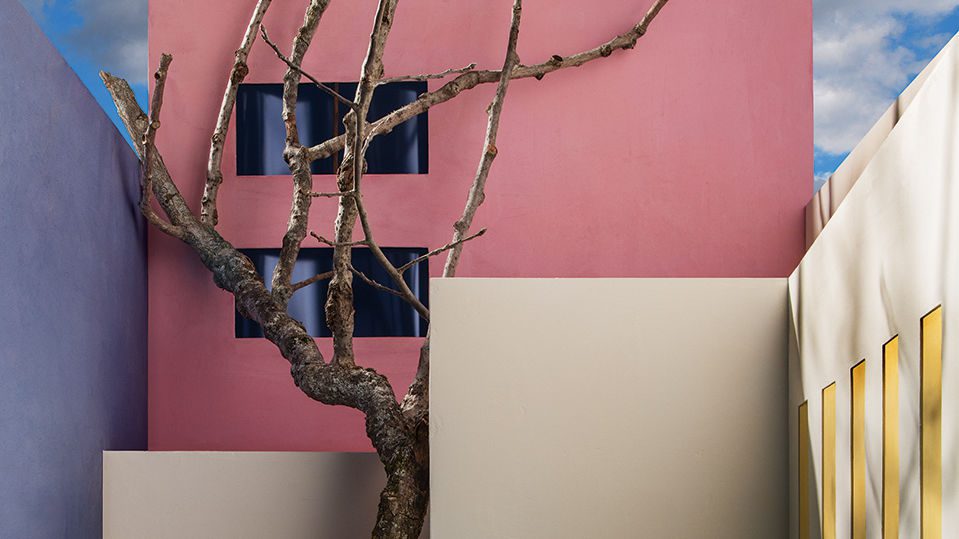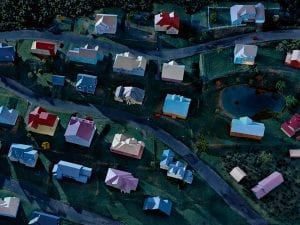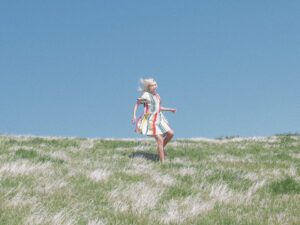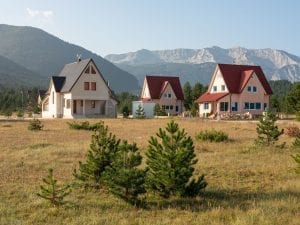For almost 40 years, James Casebere (b. 1953) has devised illusory table-top models, creating thought-provoking and visually deceptive photographs. Made of everyday materials pared down to essential forms, the structures are carefully lit and photographed in the artist’s studio. Illuminated windows suggest signs of domestic life. Water appears to ripple, bathed in a pale glow. Each scene invites the viewer beneath the surface, offering a doorway into imagined worlds.
These uncanny representations are now on view in Built Images at Sean Kelly Asia, Taiwan, an exhibition spanning 1980 to 2017. Inspired by a range of architectural and cinematic sources, Casebere’s compositions tap into art historical dialogues. For example, the flooded space of Yellow Hallway takes elements from a stairwell at Versailles, whilst recent works are influenced by world-renowned Mexican architect Luis Barragán, incorporating a use of bold colour, dramatic light and linear surfaces.
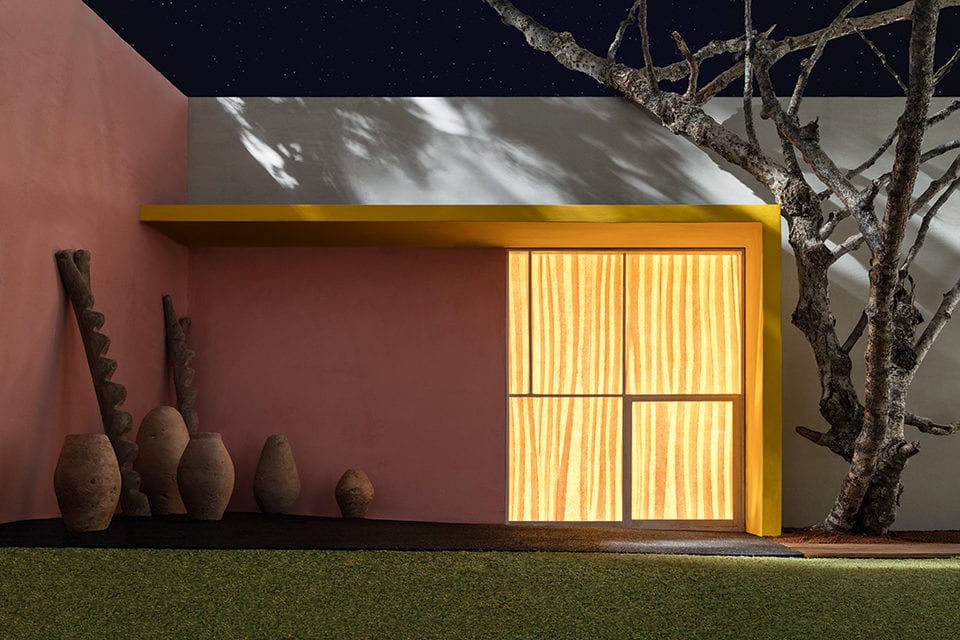
Earlier works are devoid of such bright hues, instead focusing in on the emotional potential of the work. Evoking the aesthetics of black-and-white films, works such as Storefront and Venice Ghetto eliminate extraneous details to create dynamic lighting effects. These works are also included in Sean Kelly’s show, demonstrating an evolving interest in narrative and façade.
“There was a time when I decided to leave the anthropomorphising to others.” Casebere explains. “My earliest work did this by putting an object at the centre of the image, be it a fan or a chair. But soon after, I decided to remove the object in the hopes of the viewer taking its place. In the end, I realised that what mattered was the space, the light, the colour and texture.”
Built Images runs until 31 July. Find out more here.
Lead image: James Casebere, Flooded Courtyard with Tree, 2017. © James Casebere, courtesy: Sean Kelly, New York.


